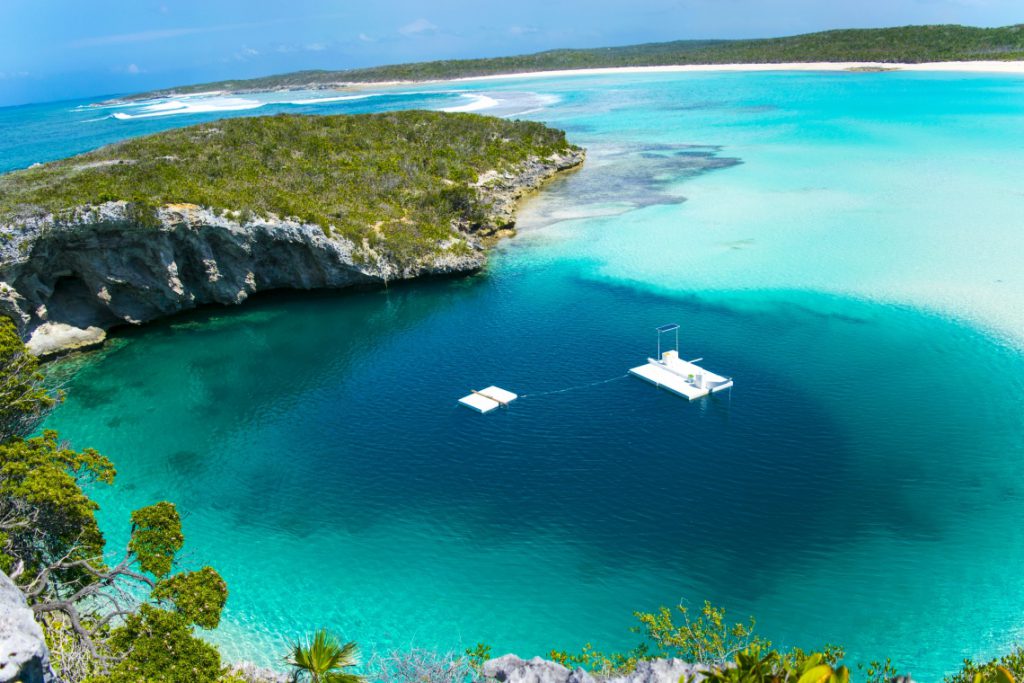Ecotourism in the Bahamas: Have You Visited the Famous Blue Holes?
by Carolyn Lee May 13, 2019

Dean’s Blue Hole. Photo Credit: The Island of The Bahamas (website).
Travelling has many exciting benefits. There are many opportunities to relax, discover new places, meet new people, create new memories and conduct business. To the delight of nature lovers, travelling today has evolved to include ecotourism.
Ecotourism, also known as sustainable tourism (ethical tourism, green tourism, responsible tourism, etc.), is a part of environmental conservation. It allows travellers to learn more about the history of other places and the preservation of historical landmarks.
The Bahamas is a top tourist destination in the Caribbean. It is the ideal getaway for fun vacations, business trips and ecotourism. It is also the home to several natural wonders such as blue holes, botanical gardens, caves and wildlife.
In the Bahamas, the Dean’s Blue Hole and the Blue Holes National Park are top attractions for both locals and tourists.
A blue hole is an underwater sinkhole, which may be formed by the erosion of carbonate rocks. It extends below sea level and may lead to submerged cave passages.
If you’re in the Bahamas, love nature and want to know more about ecotourism there, here’s a shortlist of popular blue holes to help you out.
Blue Holes National Park
- The Blue Holes National Park (BHNP) was established in 2002, in recognition of preserving natural wonders of the world. It comprises of 40, 000 acres.
- According to the Bahamas National Trust, the BHNP has the highest concentration of blue holes in the world. The caves house many unique and unusual cavefish and invertebrates, some not found anywhere else in the world.
- In addition to the blue holes, there are many activities to participate in at the park. These include camping, grilling, bird-watching, hiking on nature trails and swimming.
- It’s a habitat for Bahamian endemic birds such as the Bahama Oriole and Great Lizard Cuckoo. Other commonly seen Caribbean birds include the Cuban Emerald, Western spindalis, Red-Legged Thrush and the Black-faced Grassquit.
- It is surrounded by pine and coppice forests which are also protected areas.
- The park is open throughout the year and is free.
Dean’s Blue Hole
- Dean’s Blue Hole is the second deepest in the world with a depth of 663 ft (202 metres). The Dragon Hole in the South China Sea is the deepest.
- Vertical Blue, an annual freediving international competition organised by freediving record holder, William Trubridge, has been held there since 2008. While the event was cancelled this year, it is expected to return in 2020.
- It is the site of numerous world diving records and national diving records (10 world records and 42 national records in the 2018 Vertical Blue competitions).
- Dean’s Blue Hole boasts incredibly clear water. On good days, visibility can reach 115 feet.
- The Bahamas GeoTourism webpage notes that experts who have dived the site reported that it is enclosed on three sides by a natural rock amphitheatre. The fourth side has a turquoise lagoon and powder white beach.
- Professional diving and swimming are allowed. These activities are discouraged at nights.
- The blue hole can be accessed throughout the year. There is no fee attached.
If you enjoy diving and wish to explore the blue holes, please ensure that you take the necessary precautions. There is no lifeguard on location. For directions, click here.
Ecotourism may just be one way to change the way you vacation or do business in the Bahamas. We certainly hope this article helped in giving you the nudge that you needed!
Sources: Islands of the Bahamas, Wikipedia, Amusing Planet, Conserve Energy Future, Trip Advisor, Green Global Travel, Bahamas National Trust, and The Bahamas Family of Islands.








